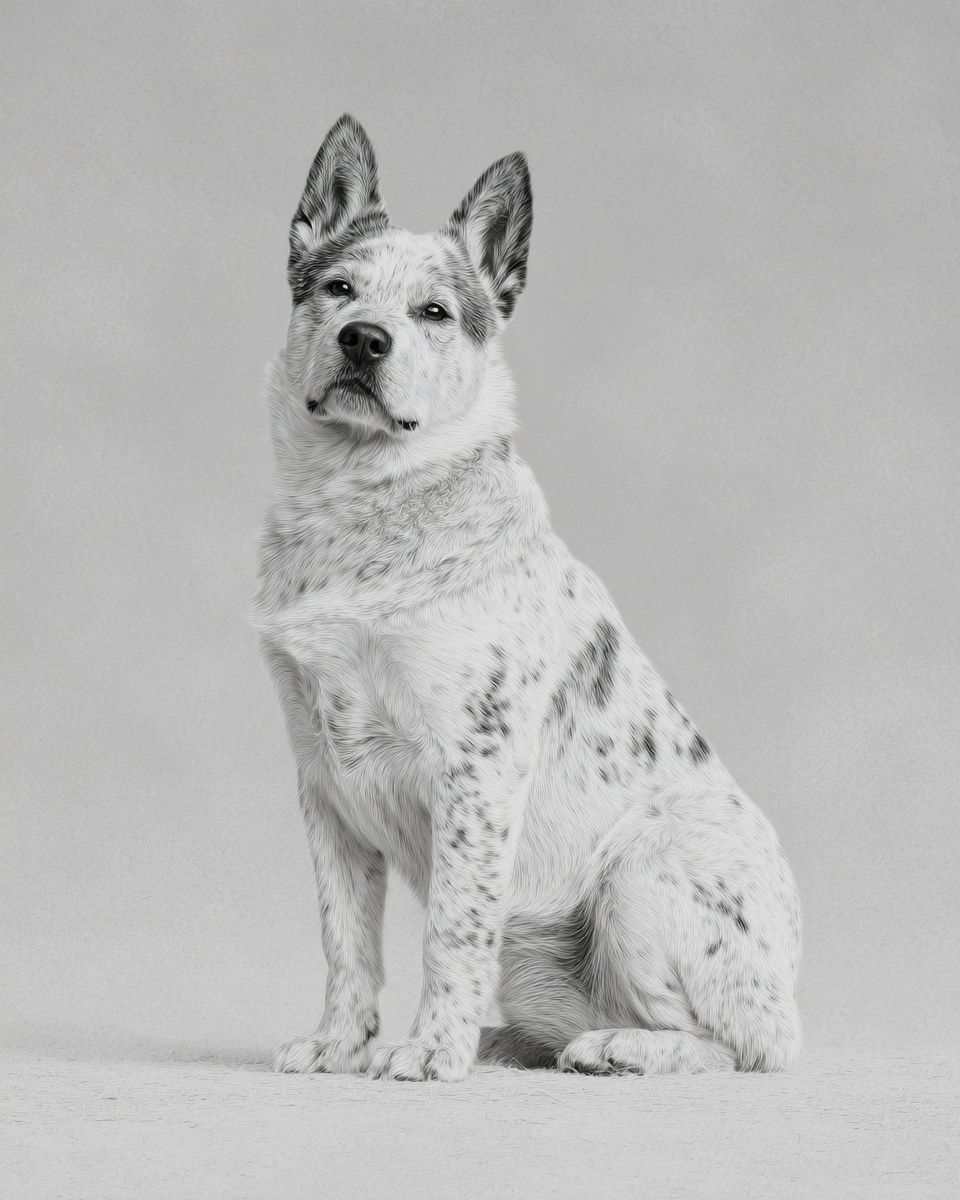Australian Cattle Dog

Description
The Australian Cattle Dog, often called the Blue Heeler, is a sturdy and agile breed originally bred for herding cattle across Australia's rugged landscapes. These dogs are compact but muscular, weighing between 35 and 50 pounds, with a short double coat that comes in blue or red mottled patterns accented by tan or black markings. Their alert expression and upright ears reflect their keen awareness and readiness to work. This breed thrives on having a job to do and shows a strong independent streak. They can be reserved around strangers but form tight bonds with their families. Their natural herding instincts may lead them to nip or herd other pets or even people if not properly managed. Early socialization and consistent training help channel their energy and intelligence into positive outlets like agility or obedience activities.
Grooming
The Australian Cattle Dog's short double coat requires minimal maintenance but benefits from regular care to stay healthy. Shedding is light to moderate, so weekly brushing with a rubber curry or bristle brush helps remove loose hair and distribute natural oils. Bathing should be done every 4 to 8 weeks to avoid drying out the skin. Nail trimming every 2 to 4 weeks prevents overgrowth, while monthly ear checks reduce the risk of infections. - Brush weekly with rubber curry or bristle brush - Bathe every 4–8 weeks, avoid over-bathing - Trim nails every 2–4 weeks - Clean ears monthly - Pro tidy as needed for stray hairs Pro tip: Focus on brushing the neck and chest areas where dirt tends to accumulate, especially after outdoor activities. The breed’s coat colors—blue mottled or red speckled with tan or black markings—don’t require special stain removal but do show dirt more easily on lighter patches.
Learn the Double routine:
→ Complete Double Grooming Guide
Walking
Australian Cattle Dogs need about 85 minutes of walking daily, split into two sessions to keep them engaged and prevent boredom. One walk in the morning can be brisk and focused on obedience or agility drills, while the evening walk can be longer and more relaxed, allowing sniffing and exploration. This schedule helps manage their strong drive to move and think. Example routine: Morning: 30-minute brisk walk with obedience practice Evening: 55-minute exploratory walk with play breaks Short walks won’t satisfy this breed. They need consistent, purposeful exercise to stay balanced and well-behaved.
Boarding
When boarding an Australian Cattle Dog, provide a crate sized between 42 and 48 inches to accommodate their muscular build comfortably. These dogs enjoy active play sessions, so plan for two energetic play blocks daily combined with scent and brain games to keep their minds sharp. Avoid small-animal toys that could trigger their herding instincts or cause frustration. Secure fencing is essential to prevent escapes, as their natural drive makes them prone to roaming if bored. Staff should introduce themselves slowly and maintain a predictable routine to reduce stress. This breed benefits from clear boundaries and consistent interaction, helping them feel safe and engaged during their stay.